
|
This website will serve YOU to Be the BEST you can Be at that moment in time...
Spiritual Healing.....
DO YOU SUFFER FROM PHYSICAL OR SPIRITUAL PAIN ?
Spiritual Healing is the answer….. Read more...
|

Master Saint Germain is in control in the next 2000 years! Learn more...

Want to be a Full Spectrum Healer? Learn more...

How does healing work? Download your FREE Ebook here.
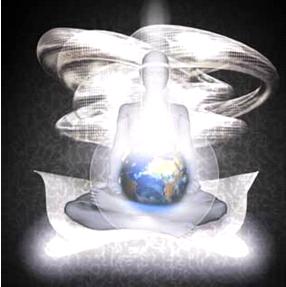
Receive Multi-Dimensional Energy Downloads. Learn more...
|

Shambhala
is a magical land which is shaped like an eight-petalled lotus flower.
It has been ruled by priest-kings for many thousands of years.
Read more...
|

The Brothers of Light
are a spiritual
organization which
consist of the highest initiates of our cosmic system. Read more...
|
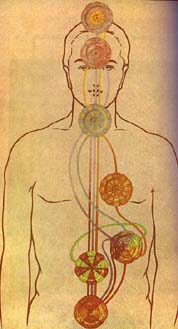
Chakras
are important Entry Gates of the Aura. Within the physical body resides
a body double, a spiritual or etheric body, that contains the Chakras.
Read more... |

|
|
Power of Breathing Exercise

With breathing exercise begins our journey of life. But as we breathe incessantly, taking it for granted, we develop bad breathing habits. Here are some breathing exercise tips on how to correct them for total well-being
The Power of breathing exercise is the root of our existence. Tirelessly, unimpeded, it flows in all the pathways of our body, hiding in the secret, inner recesses. Not a single pause. Loud and noisy if you're angry. Agitated, it heaves the chest. Slow and steady if you're calm.
FUNCTION
Do we realize that it is this very breath, humble yet vital, which is actually controlling all our responses—physical, mental and emotional? When you are in the mother's womb, breathing exercise keeps you alive. The connecting cord breathes. Breathing exercise sustains you inside and prepares you for the outside world. As children we breathe deeply, filling the lower abdomen and expanding the diaphragm. The diaphragm is a parachute-shaped structure with a dome, located just below the heart, and attached to the sides and front of the inner rib cage and the tip of the breastbone. At the back of the dome there are long muscles or crura, which run along the front of the spinal column and act as anchors for the parachute. In healthy breathing exercise, the diaphragm moves without restriction, descending as we inhale and ascending as we exhale. |
But as we grow older, we are so engrossed in the race for survival that we forget to breathe properly, and breathing tends to get shallower. We stop using the abdominal muscles, then the diaphragm. The lungs don't fill completely with air. Eventually the breath barely reaches the top of the lungs and stays mainly in the throat, leading to depletion of oxygen in the body. Taoists believe that this loss of oxygen is the primary cause of memory loss in the elderly.
CORRECT WAY
What exactly is normal rate of breathing and how should we go about attaining it? Notes Dennis Lewis in The Tao of Natural Breathing exercise: "Our inhalation and exhalation cycle is 12-14 times a minute when we are awake and six to eight times a minute when we are asleep. A baby breathes at about twice these rates." Not only does breath have its regular cycle, it can change radically with different activities. For instance, after extreme physical activity it can go up to 100 times a minute. But with serious and correct breathing exercisewe can breathe four to eight times a minute, as they take in more oxygen and expel more carbon dioxide with each exhalation and inhalation.
In Patanjali Yoga Sutra, the Power of breathing exercise is the correct way of breathing for a healthier and longer life. This is the Three Step Rhythmic Breathing Exercise (3 SRB)—three steps being technique, volume, and rhythm. Revived by the late S.N. Tavaria in Mumbai, this technique is taught today in Gamdevi temple of south Mumbai. In 3 SR breathing exercise, the chest and abdomen have to rise and fall simultaneously, lungs filled to normal capacity, and the correct rhythm followed, involving three seconds to inhale and two seconds to exhale. |
TAOISTS KNEW IT TOO
But Indians were not alone in deciphering the correct way to breathe. Taoists were also aware of a life-sustaining force in the air. Apart from its major components of oxygen, nitrogen and carbon dioxide, Taoists also discovered ions—floating charged particles. The air high up in the mountains has the maximum concentration of ions.
That is why, apart from the serenity and isolation, many Taoists lived in the mountains of China. The most important are negative ions, which supply the electric current within our body's cells. In the cities nowadays, these ions are depleted by pollution and constricting spaces. Any depletion in these negative ions makes us weak and depressed.
Since it's not possible for all of us to live in the mountains, the Chi machines and breathing exercise are a boon for city dwellers. Though still relatively unknown in India, in China these breathing exercise machines are in widespread use, especially in hospitals. They are high-end ionizers, which spew out negative ions. In Japan and the West, they duplicate as air cleaners with blower motors.
Negative ions attach themselves to anything floating in the air and cause the pollutants to fall out. Chi breathing exercise machines, it has been proved, are excellent devices for allergy sufferers. And in USA, breathing exercise machines are used in space programs. Research has shown that ionizers in space capsules keep the astronauts alert and energized. Evidently, the movement of breath regulates the body.
|
SMOOTH FLOW
So how is breathing exercise related to health and well-being? Feel the tight spots in your neck and shoulders, pain in your back, sore muscles or aching legs. These are the places where the energy doesn't flow smoothly. Breathing exercise encompasses inner growth also. Before looking for answers, it is essential to understand the intimate relationship between mind and body, the many powerful and subtle ways in which they influence each other.
All our physical and psychological responses are accompanied by a change in breathing. Surprised, and a gasp immediately follows. If you're stressed out, there will be a different breathing pattern. Writes Donna Farhi, New Zealander yoga teacher, in Holding Your Breath (Yoga Journal, April 1996): "Stess may be real or imagined. Just imagining a stressful event can reduce inhalation volume. When we are continuously exposed to stress, then the body just forgets to relax." Obviously, the breathing pattern changes, and "it just might become a statement about what happened in the past rather then what is happening to us in the present".
But what exactly are we doing wrong? Donna explains: "There is not one correct way to breathe. But there are common ways in which people restrict their breathing." Obstructing breath means cutting ourselves off from the most vital source of human energy. Only when we free our respiratory process thru breathing exercise, we breathe in the manner fitting for each situation.
This brings us to pranayama (Power of breathing exercise). Renowned yoga teacher Ingvar, in his book Light on Pranayama, says: "Prana is the energy permeating the universe at all levels-physical, mental, intellectual, sexual, spiritual and cosmic energy. It is usually translated as breath. Thus pranayama is an breathing exercise art and has breathing exercise techniques to make the respiratory organs move and expand intentionally, rhythmically and intensively." In these breathing exercise techniques, there is a long, sustained flow of inhalation, exhalation and retention of breath. Thus, the flow of prana is regulated along with thoughts, desires and actions, which gives poise and tremendous will power to master oneself. Opines Donna: "Pranayama strengthens and refines breathing. But most of us practice pranayama without addressing underlying breath-holding habits. Paradoxically, pranayama frequently suppresses deep-seated fears and insecurities."
|
SPOT CHECK
Then what is the correct way to breathe? Do we need to relearn breathing? Learning to breathe is a deconstruction process, not a breathing exercise technique to improve breathing. We identify and let go of existing things, which restrict the natural flow of breath.
Perform a subtle breathing exercise check whether the breath is disordered or restricted.
Sit comfortably in a chair, back straight and feet firmly planted on the ground. Quietly observe your breath. Ask yourself the following questions and wait for your reactions. Don't worry if they are vague or blurry. Over a period of time, the sensations will become clear and defined.
Where do I feel my breathing? To find out, place one hand on your abdomen and the other on the upper chest. Feel the point of origin of breath. Let your perceptions come through. Don't overlook any small movement. Do you feel any particular area where the breath is more noticeable? What does my breathing feel like? Is it rough, jerky, labored, rhythmic? During this breathing exercise let any words or images arise. Make a note of them. How fast do I breathe? Without altering the number of breaths, count the number of times you breathe in and out per minute when sitting quietly. Remember, an inhalation and exhalation makes one breathing exercise cycle. And no cheating! Now you're on track, so proceed further with this breathing exercise.
Contract your diaphragm. It helps you feel how your diaphragm responds to stress. And identify when you are contracting and restricting free movement of this muscle. Adopt any posture, which is comfortable: sit, stand or lie down. Place one hand on your abdomen. Relax the muscles in your body and feel the movement of the diaphragm. As the diaphragm lies deep in your body, you will feel only surface movements. Quickly clench the fist of the other hand. Did you feel the parachute jump under your hand? When the outer muscles prepare themselves for reaction, inner muscles automatically follow suit.
|
COMMON BREATH EXERCISE-HOLDING PATTERNS
Now that you are familiar with your breathing exercise pattern, let's look at ways in which most of us restrict it. You can crosscheck with your breathing habits.
Reverse Breathing Exercise
In correct breathing exercise, the diaphragm descends during inhalation and downward pressure causes the abdomen to billow outwards. Breathing out, the diaphragm moves up into the chest, causing a slight drawing inwards and upwards through the abdomen. Whereas in reverse breathing, the abdomen moves in on inhalation and out on exhalation. This kind of breathing often arises from the habit of wearing restrictive clothing or tight belts, which makes it impossible for the abdomen to expand during any breathing phase.
Breathing Exercise Effect on body/mind
Since reverse breathing causes confusion in the diaphragm, it also results in mental disorientation. Reverse breathers often feel clumsy and uncoordinated. Hence, chronic tension in your upper body, especially around the back of the neck, upper shoulder, upper back, and jaw area.
Identify it
Watch the movement of your breath. See if you can identify reverse breathing movements when you breathe in or out. How to change patterns Slow down so that you can become more aware of the reversal in breathing pattern. Relax your abdomen. Consciously allow the abdomen to move out on inhalation and move in on exhalation. No force, let it take its own path.
|
Chest Breathing Exercise
This is probably the most common breathing pattern in today's stress-filled society. Also known as paradoxical breathing, it is a natural reflex when we are suddenly startled or frightened. We gasp, pull the abdomen in and breathe high into the chest. The lift of the abdomen and pelvic floor prevents the diaphragm from descending completely as we inhale. Chest breathers restrict breath movement in the abdomen, forcing it higher up into the chest, while shoulders move up and down.
Breathing Exercise Effect on mind/body
Chest breathers rely on weak upper body muscles. Thereby developing chronic tension in thoracic spine, shoulders and neck. Moreover, this tension is resistant to massage or any other relaxation therapy as it recapitulates the moment the person resumes chest breathing, which is an incredible 22,000 times a day! Since we can't breathe in fully, we can't breathe out fully also. So we resort to breathing more quickly to make up for lack of oxygen. Scarier still is the fact that it sets the stage for an even more serious breathing problem: hyperventilation. Chest breathers normally sit on the edge of their seats and exude anticipation in their entire bearing. They never seem to have enough time to do all the tasks they set out on and often experience a chronic, free-floating state of anxiety. Scientific evidence now points to the connection between chest breathing, heart disease and high blood pressure.
Identify it
Place one hand on your abdomen and the other on your chest. Observe the movement of both. If both your shoulders and chest are rising, you are probably not a chest breather. A chest breather suppresses breath in the lower abdomen, forcing it to move higher up into the body.
How to let go
Relax your shoulders and upper back. Consciously follow normal breathing pattern. Mentally assess yourself. Ground yourself in the present.
|
Hyperventilation
As this breathing pattern develops out of chest breathing, it is more restrictive. When the diaphragm can't descend completely during inhalation, it reduces space in the chest, limiting lung capacity. Hence, less oxygen is taken in with each breath. In this habit we tend to breathe quickly.
Effect on mind/body
First of all, hyperventilation makes us lose too much carbon dioxide from the body, the most crucial ingredient in helping us maintain an acid-alkaline balance of the blood (about pH 7.40). With the result that the metabolism shifts from acid to alkaline. Dr Robert Fried, author of The Breath Connection, states that it restricts brain arteries and makes nerves and muscles hyperactive, leads to headache, lack of concentration, dizziness, breathlessness, cold hands and feet and inappropriate responses.
Identify it
Take frequent note of your breath while performing any activity. You may be surprised to discover that most often, it is accelerated even in the most sedentary activity. Watch your inhalation and exhalation also. You may sigh, yawn or shallow breathe.
How to let go
Focus on increasing your exhalation. Decelerate some of your activities. Your breathing will mirror the rate at which you do things. Write some letters by hand instead of typing them. Try to do some menial work every day. Any rhythmic, repetitive task will repace breathing. Always question: is there actually any need to hurry in any task?
|
Breath Grabbing
Our breath has three parts: exhalation, pause, inhalation. Breath grabbers grasp the next breath without taking a pause. This pause results in a sense of ease, surrender, and relaxation. Breath grabbers are also the kind of people who finish other people's sentences for them. They also feel that if they don't jump in or reach out for what they want, then they'll miss out or be left behind.
How to let go
Observe your breathing as you listen to others. Let other people finish their sentences. Pause consciously before you speak, even at the ring of the bell or a glimpse of your favorite color.
|
Rejuvenate
Most often, breathing becomes restrictive because the nervous system becomes used to a particular way of breathing. Changing breathing patterns requires courage, honesty and a willingness to proceed further. First identify the reasons, which restrict breathing. Next, hold your breath and disengage from the holding pattern. Consciously try to relax the tense areas.
Because of the intimate connection between the breath and the mind, watching the breath has been used as a meditation technique for eons, most prominently in the Power of breathing exercise, which the Buddha is said to have taught himself and which in our time has been popularized by S.N. Goenka. Speaking precisely, watching the breath is the first stage in Vipassana, and it is called Anapana. It quietens down the mind sufficiently to graduate to Vipassana, observing bodily sensations. "Any form of meditation, even the quiet observation of your breath, is a union with your innerself. It helps in expanding our consciousness and mingling with the infinite source of light and wisdom. Thus, creating a balance and enriching life," writes R. Venugopalan in The Art of Breathing.
Elucidates Lewis: "When we are able to breathe through our whole body, sensing our verticality from head to foot, we are aligning ourselves with the natural flow of energy connecting heaven and earth." This increases oxygen intake, promotes efficiency in the entire breathing mechanism, revitalizes all the cells, tissues, and body organs and eliminates toxins. At the psychological level, it helps us relax, focus on our inner self and get "accurate and complete impressions" of our body, mind and soul. Soon, emotions and attitude will change and any negativity will lose its hold. Breath on, for if it stops, the body becomes inert. Life ends.
|
Here is a practical breathing exercise for you to follow every day for 20 minutes:
Lay down in a comfortable position, breath in and hold the breath for 6 counts. Hold it for 2 counts, breath out for 6 counts and hold it for 2 counts again. Then repeat for 20 minutes.
The breathing exercise rythm is 6-2-6-2 - repeat.
I urge you to do this crucial exercise every day. It will revitalize your body, balance Yin and Yang and flushes the energy bodies with fresh life force.
|
|
 |
|
Tom Om, Chiropractor, Spiritual Healer and Reiki Master

Christpower heals you and the Earth - Click here
Transformation
Products:
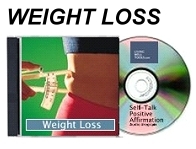
Click here to learn more about this magnificent transformation product...

Click here to learn more about this magnificent transformation product...
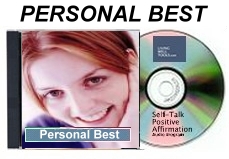
Click here to learn more about this magnificent transformation product...
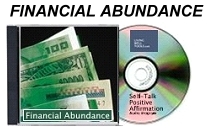
Click here to learn more about this magnificent transformation product...
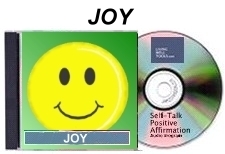
Click here to learn more about this magnificent transformation product...
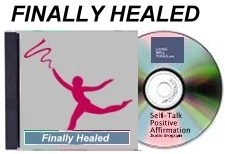
Click here to learn more about this magnificent transformation product...
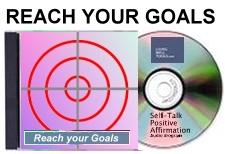
Click here to learn more about this magnificent transformation product...
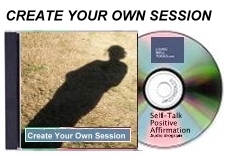
Click here to learn more about this magnificent transformation product...

| |
|